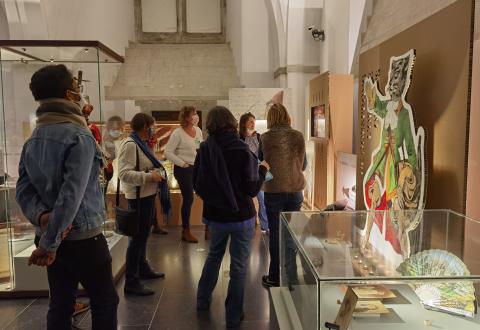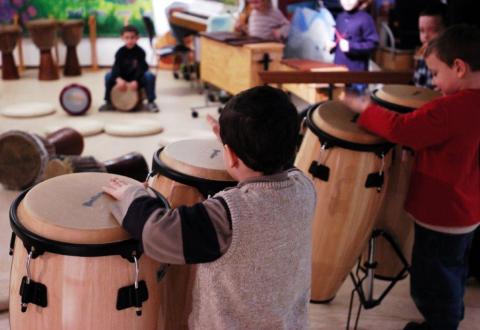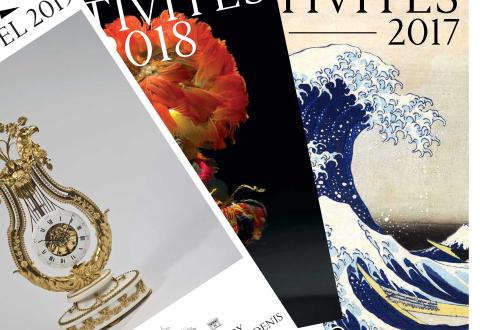Structure
The Royal Museums of Art and History are part of the Federal Scientific Institutes managed by the Minister for Science Policy of Belgium. The RMAH encompass various museums in Brussels:

Vision
Connecting people, art and history
Located in Brussels, at the heart of Europe, the Royal Museums of Art and History (RMAH) inspire curiosity and wonder about the worlds that men and women have created.
The RMAH provide spaces for democratisation, inclusion and polyphony, enabling critical dialogue about pasts and futures. We carry out research and hold for society the works of art, everyday objects, scientific data and documents entrusted to us. We safeguard diverse memories for future generations and guarantee equal rights and access to heritage and scientific expertise.
We are a...
Connecting people, art and history
Located in Brussels, at the heart of Europe, the Royal Museums of Art and History (RMAH) inspire curiosity and wonder about the worlds that men and women have created.
The RMAH provide spaces for democratisation, inclusion and polyphony, enabling critical dialogue about pasts and futures. We carry out research and hold for society the works of art, everyday objects, scientific data and documents entrusted to us. We safeguard diverse memories for future generations and guarantee equal rights and access to heritage and scientific expertise.
We are a participatory, non-profit and transparent federal scientific institution. We work in active partnership for and with diverse communities to preserve, collect, interpret, exhibit and open collections for study, education, comfort and enjoyment. We foster a deeper understanding of societies and cultures, which encourages us to take better care of the world, allowing us to imagine it differently.
We want to contribute to human dignity, social justice, global equality, planetary well-being and the perception of beauty and time.

Mission
The Royal Museums of Art and History were founded by Royal Decree on 8 August 1835. At the time of the amendment of 23 April 2002, the missions were recorded as follows:
- the acquisition and conservation of works of art and documentary work of scientific and museum interest relating to the collections;
- the keeping of a general inventory in which each work of art is recorded, with the date of acquisition, origin, purchase price and other important information.
- the organisation of an archive, a documentation centre for the collections and a library specialising in the fields represented in...
The Royal Museums of Art and History were founded by Royal Decree on 8 August 1835. At the time of the amendment of 23 April 2002, the missions were recorded as follows:
- the acquisition and conservation of works of art and documentary work of scientific and museum interest relating to the collections;
- the keeping of a general inventory in which each work of art is recorded, with the date of acquisition, origin, purchase price and other important information.
- the organisation of an archive, a documentation centre for the collections and a library specialising in the fields represented in the institution;
- the collection of scientific and documentary data relating to the collections;
- carrying out scientific work relating to the collections;
- promoting and disseminating the results of scientific research, both nationally and internationally;
- active participation in scientific missions;
- active participation in scientific projects and meetings, both nationally and internationally;
- serving the public by providing information about the collections, organising educational activities and assisting researchers;
- building up a database of collections of works of art, archives and the library;
- publishing scientific works and others aimed at a wide audience.
- to draw up a digitalisation plan covering both the constituent elements of the heritage, i.e. the digitalisation of collections and documents, and the information systems relating to the heritage by developing online and offline electronic information.

Strategic objectives
- Create centres of expertise by promoting interdisciplinary scientific collaboration at national and international level.
- To launch the transition of the RMAH towards a Gold Standard Open access and Open data.
- Optimise the management of RMAH collections.
- Revitalising, renovating and modernising the Art & History Museum.
- Modernising the governance of the RMAH.
- Improving procedures and working methods in the context of human resources management and prevention in order to increase efficiency and achieve a satisfactory state of well-being for all staff.

Annual reports
The annual reports can be found on the page Publications.
